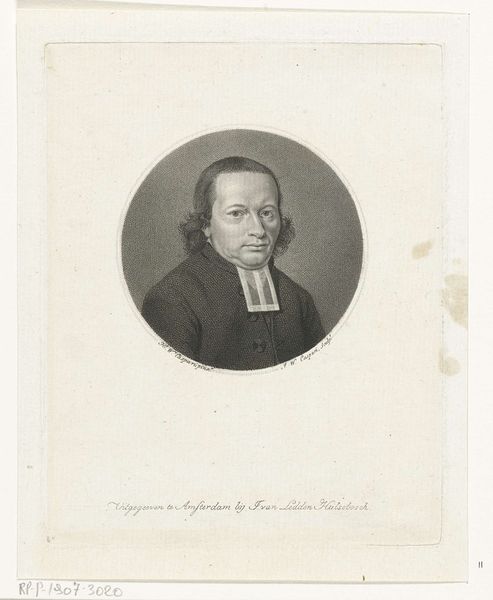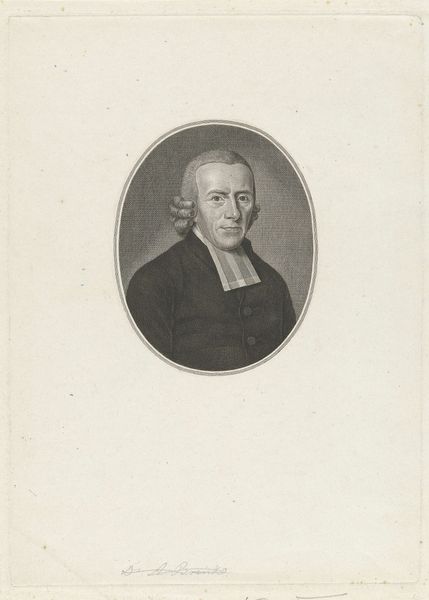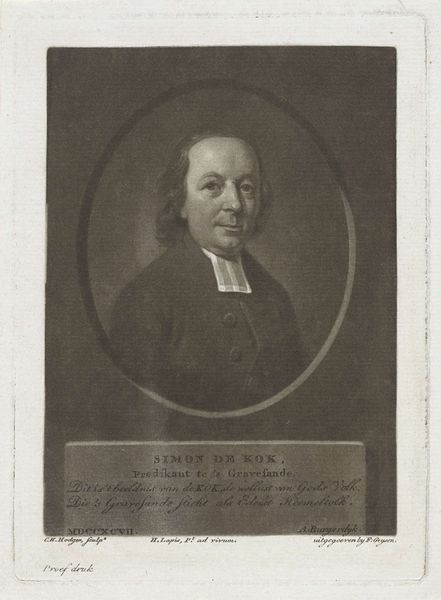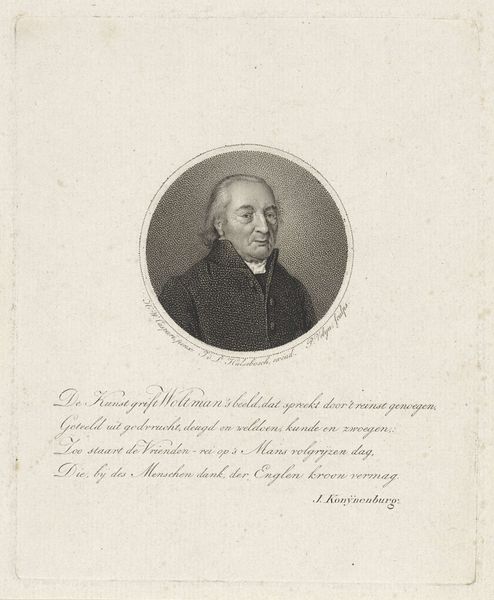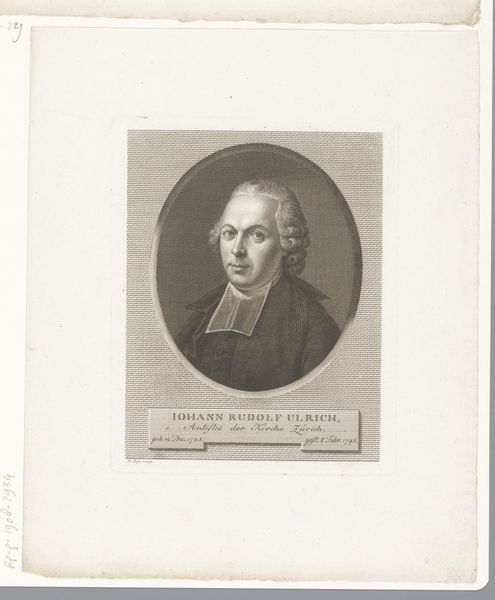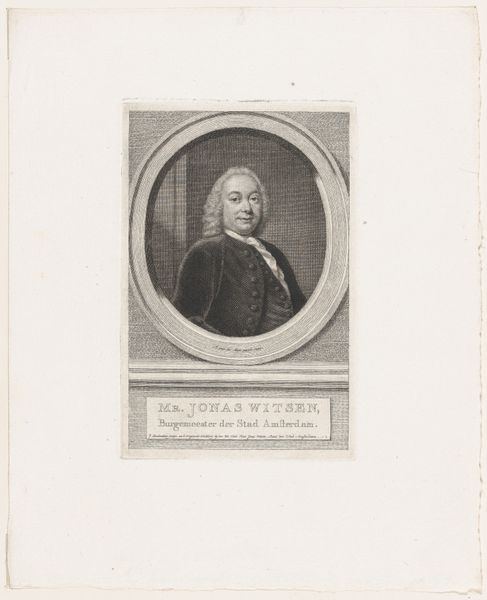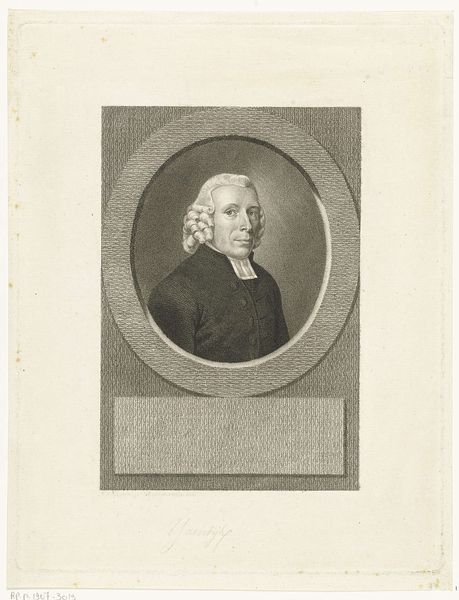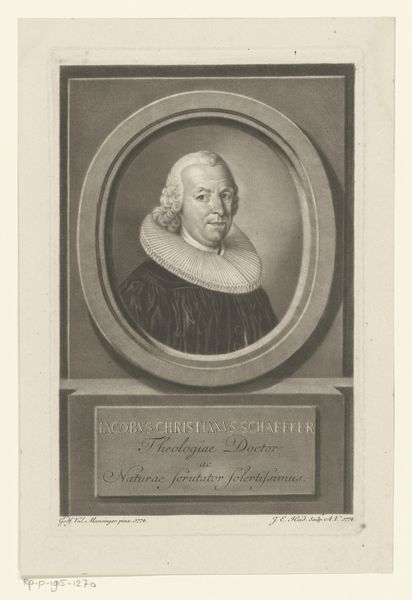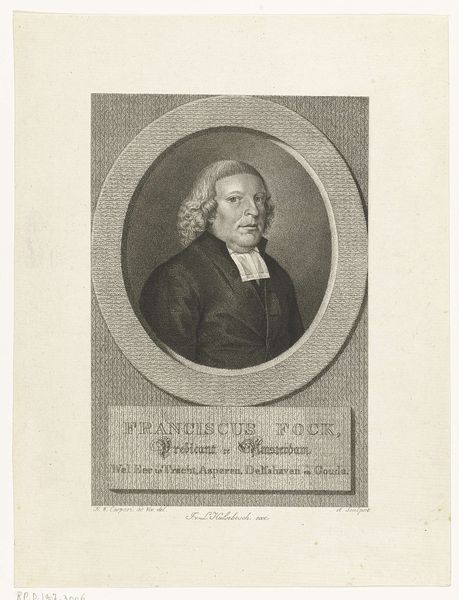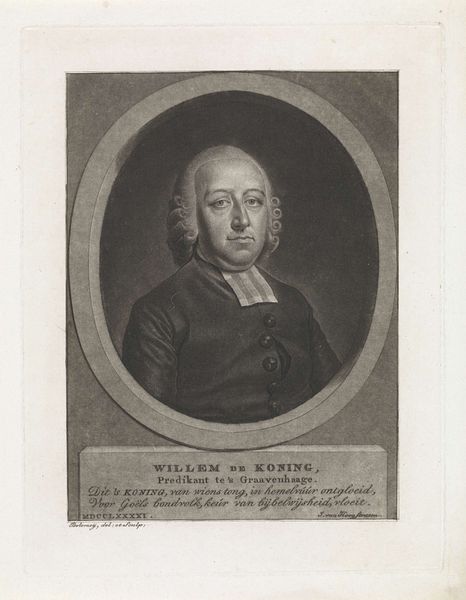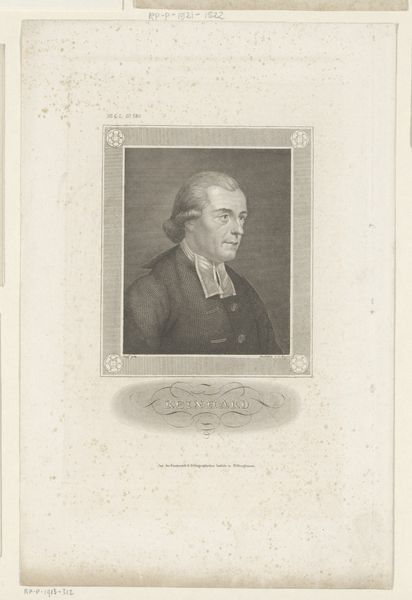
Dimensions: height 153 mm, width 120 mm
Copyright: Rijks Museum: Open Domain
Editor: This is a portrait of Johannes Jacobus Metelerkamp, made between 1789 and 1822 by Jan Willem Caspari. It's a print – an engraving, to be precise – and something about the direct gaze makes me curious. What do you see in this piece? Curator: Well, beyond the immediate likeness, I see a reflection of the complex relationship between religious authority and social power. Consider the historical context: the late 18th and early 19th centuries were a time of immense social upheaval and the questioning of traditional hierarchies. Metelerkamp, as a Doctor of Theology and a preacher, embodies that establishment. How does his depiction potentially reinforce or subvert the existing social order? Editor: I see what you mean. It feels like the artist both respects and questions the power he holds, right? The portrait captures his position, but does it offer commentary, too? Curator: Exactly! And the choice of engraving as a medium is crucial. Prints, unlike unique paintings, allowed for wider distribution, meaning images and ideologies could circulate more freely among different social classes. Do you think the accessibility of this artwork affects our understanding of Metelerkamp's influence? Editor: Absolutely. If this was widely circulated, it made Metelerkamp more accessible to the people he served, maybe even those he governed spiritually. It puts his image directly in their hands. Curator: Precisely. And the controlled line work of the engraving, that almost austere visual language, what does that say about the values of the time? About the construction of masculinity, perhaps, and the representation of religious figures? Editor: It's fascinating how much historical and social weight a single image can carry. Looking at this, I’m thinking about the subtle ways power is represented, reinforced, and potentially challenged. Curator: It's a conversation starter, right? Art encourages us to question, analyze, and connect to these histories, and it resonates even today.
Comments
No comments
Be the first to comment and join the conversation on the ultimate creative platform.
